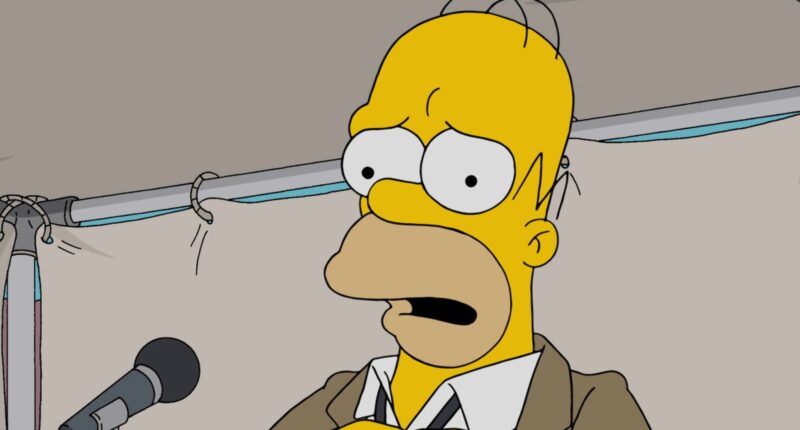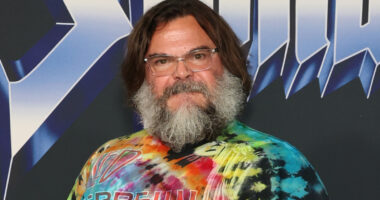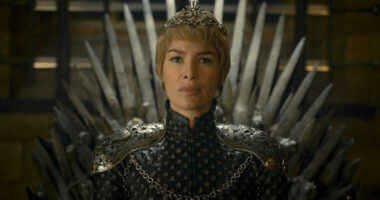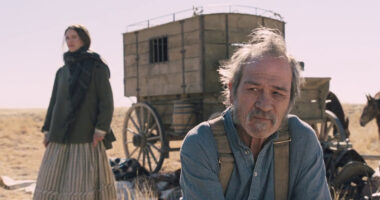Share this @internewscast.com
“The Simpsons” has left an indelible mark on American television, transforming the landscape of sitcoms with its unique blend of humor and heart. While the show boasts numerous episodes that showcase its brilliance, it’s inevitable that with over 790 installments, a few missteps have occurred along the way. Our ranking of the 12 worst episodes captures those moments when the magic faltered: characters once adored become grating; inventive gags that defined the show are replaced by clichéd humor; and guest stars fail to shine, leaving audiences wanting more.
These lackluster episodes stretch across the show’s extensive timeline, from its early years to more recent seasons. Despite spanning various storylines, they share common flaws, particularly overloaded scripts and a deficiency in emotional depth. As you ponder these less-than-stellar moments in “The Simpsons” history, you might find comfort in a donut and a can of Buzz Cola to soften the blow.
Season 2’s “Dead Putting Society” is a notable example. In the DVD audio commentary, creators like Mike Reiss and Rich Moore humorously critique the episode’s failures, particularly Homer Simpson’s relentless anger throughout. This singular tone drains the humor from the episode, as Homer pushes Bart to win a mini-golf tournament against Ned Flanders and his son Todd. Although there are some amusing visual jokes on the golf course, the episode feels formulaic and uninspired.
This installment’s timing was unfortunate, landing amid a trio of Bart-centric episodes during the height of “Bart-mania.” While Bart’s rebellious spirit captivated audiences, this particular episode pales in comparison to superior entries like “Bart the Daredevil.” Even Reiss and Al Jean admit that the episode’s conclusion, featuring Homer and Ned mowing each other’s lawns in dresses, falls flat as a typical sitcom ending.
12. Dead Putting Society (Season 2, Episode 6)
Fast forward to “Rome-Old and Juli-Eh,” where the writers’ desperation for fresh ideas is palpable. This episode, focusing on an unlikely romance between Grandpa Simpson and Selma Bouvier, misses the mark. The concept falls short, echoing an earlier storyline from Season 5’s “Lady Bouvier’s Lover” without delivering the same comedic impact. Instead, the episode leans heavily on tired old-age jokes, and attempts at genuine sentiment fail to resonate due to the unconvincing chemistry between the characters.
Rather than embracing the absurdity of the plot, the episode dilutes its potential with a weak subplot involving Bart and Lisa’s cardboard fort defense. The absence of laughs in both storylines leaves the episode feeling hollow. Those seeking a more satisfying experience should revisit “Lady Bouvier’s Lover,” where the balance between humor and heart is better achieved.
11. Rome-Old and Juli-Eh (Season 18, Episode 15)
You can feel the “Simpsons” writers straining to come up with new ideas as “Rome-Old and Juli-Eh,” which chronicles Grandpa Simpson (Dan Castellaneta) and Selma Bouvier (Julie Kavner) falling in love, unfolds. Pairing up these two is an outlandish notion that just doesn’t pay off. For starters, Grandpa already fell in love with one of Marge’s relatives back in Season 5 with “Lady Bouvier’s Lover.” Returning to that well doesn’t produce an unforgettable laugh-fest. Instead, writer Daniel Chun settles for delivering standard old people jokes. Chun’s decision to wring genuine sentimentality out of the pair’s connection in “Rome-Old and Juli-Eh’s” final scenes is also a major mistake. This couple is nowhere near compelling enough to warrant genuine audience investment.
If this episode was going to embrace such a ludicrous (and derivative) plot, they should’ve leaned into the comedic madness. Time that could’ve been spent on fleshing out Grandpa and Selma’s relationship instead gets chucked over to a middling subplot involving Bart and Lisa (Yeardley Smith) defending their cardboard box fort from a bunch of delivery drivers. The laughs are noticeably absent from this storyline, resulting in an episode that falls short in both of its narrative tracks. Just watch “Lady Bouvier’s Lover” instead.
10. Monty Can’t Buy Me Love (Season 10, Episode 21)
Mr. Burns’ (Harry Shearer) worst moments drive many unforgettable “Simpsons” episodes. The Season 10 outing “Monty Can’t Buy Me Love,” however, spits in the face of his humorous legacy. This outing, where Mr. Burns wants to be loved by Springfield’s citizens, is incredibly indecisive narratively, particularly when it makes a detour into Mr. Burns wanting to capture Scotland’s Loch Ness Monster. Bringing this fantastical beast into the “Simpsons” world is a bold move that doesn’t pay off. For one thing, the creature’s design is uninspired, resembling generic playground equipment. For another, clashing this cryptid with Springfield’s denizens doesn’t produce any memorable gags.
A clumsy ending where Nessie gets a job as a casino employee epitomizes how writer John Swartzwelder had no idea what to do with either this critter or its storyline. Not even bringing Groundskeeper Willie (Dan Castellaneta) back to his home country of Scotland produces substantial laughs. This whole episode feels like it is being constantly improvised in the worst of ways. There aren’t even any funny, old-timey phrases from Mr. Burns to give the proceedings some pep in their step. From top to bottom, “Monty Can’t Buy Me Love” is just impossible to adore.
9. The Real Housewives of Fat Tony (Season 22, Episode 19)
With all due respect to actor Joe Mantegna, it’s baffling that Season 22 of “The Simpsons” dedicated two separate episodes to his character, the mobster Fat Tony. After “Donnie Fatso,” Tony returned to the spotlight with “The Real Housewives of Fat Tony,” where Selma and Fat Tony get hitched. This plotline was a flat excuse to deliver a parody of the then-hot reality show “Jersey Shore.” 14 years earlier, when “The Simpsons” clashed with “The X-Files,” the result was a terrific episode that could work for viewers of any stripe, including those who’d never even heard of Mulder (David Duchovny) and Scully (Gillian Anderson).
“Real Housewives of Fat Tony,” meanwhile, dishes out stale skewerings of “Jersey Shore” that were already old hat in 2011. Years after the episode’s debut, its gags feel practically arcane. The rest of the plot is nothing special. A secondary storyline about Bart having a gift for sniffing out truffles (more fat jokes) takes us too far from Bart’s best moments on the show. Pairing up Selma with a tough gangster just doesn’t produce as many laughs as her Season 7 fling with Troy McClure (Phil Hartman). Ending this outing with an eyeroll-worthy catfight just reinforces how predictable this episode is. “The Real Housewives of Fat Tony” makes one wonder why the “Simpsons” writers were so fixated on this generic mobster.
8. Pranksta Rap (Season 16, Episode 9)
In Season 7, “The Simpsons” delivered the episode “Homerpalooza,” which commented on and parodied many famous bands of the mid-’90s, such as Sonic Youth and The Smashing Pumpkins. The Season 16 installment “Pranksta Rap,” which zeroed in on the rap scene, was far less successful. On the contrary, this episode (about Bart faking his own kidnapping to attend a rap concert, which is another questionable moment on the “Simpsons” that we try to ignore) is like nails on a chalkboard.
What’s most frustrating is that these jokes about the rap scene seem based on distant observations of the genre. There are so many gags one could spin out of this musical genre, yet Matt Selman’s script keeps the humor so surface-level that one could be forgiven if his only exposure to rap was the Fruity Pebbles commercial jingle “My name is Barney Rubble and I’m here to say …” Chief Wiggum’s (Hank Azaria) plot about proving his competence by solving Bart’s kidnapping isn’t much better. The jokes are stale and canned in this storyline, including an exceedingly self-referential sequence involving Barney Fife (Dana Gould) giving Wiggum a pep talk.
“Pranksta Rap” peaks in shabbiness by screeching to a halt with an impromptu pool party, the ultimate sign of an episode running out of gas. Considering the quality level of his later “Simpsons” work, it’s astonishing Selman wrote something as poor as “Pranksta Rap.”
7. Days of Future Future (Season 25, Episode 18)
Sometimes, sequels just don’t work. It happened with “Thor: Love & Thunder,” the follow-up to “Thor: Ragnarok.” It happened to “The Godfather Part III.” And it has happened to “The Simpsons.” Season 25 returns to the possible events set forth in Seasons 23’s “Holidays of Future Passed,” which took an engaging, mature look at the grown up Simpsons kids and how they were now navigating parenthood. It’s not good.
“Days of Future Future” tosses out the preceding episode’s thoughtfulness in favor of hollow pop culture references and tech gags. Worst of all, writer J. Steward Burns pulls a shaggy dog story on the audience by revealing that the majority of the episode was a “Total Recall” style simulation. It’s a cheap rug pull that accentuates the laziness of the episode, with insipid gags about uploading Homer’s mind to a flash drive.
Jumping into the future doesn’t offer new, interesting layers to our beloved characters, or produce the fun jokes that pepped up “Holidays of Future Passed.” Instead, “Days of Future Future” is a retread that puts this episode in the bin with countless other unwelcome sequels.
6. Much Apu About Something (Season 27, Episode 12)
If you’re Matt Groening, what do you do with a character as controversial as Hank Azaria’s Apu? That’s a quandary “The Simpsons” grappled with for years, including in the Season 27 episode “Much Apu About Something.” In this episode, Apu’s relative Jamshed “Jay” Nahasapeemapetilon (Utkarsh Ambudkar) takes over the Kwik-E-Mart and overhauls it into a Whole Foods knock-off. This inspires a fight between Apu and Jay, the latter of whom detests his uncle for being a stereotype. The generational conflict enables the “Simpsons” writers to address concerns about Apu’s character through Jay’s dialogue, without challenging the show’s status quo. Wimpy gags about how the show targets “everyone” populated the script, instead of interesting and specific self-critical jokes.
Jay existing as an antagonistic mouthpiece for complaints about Apu wastes an opportunity to lend personality to a new member of the Springfield community. No wonder Ambudkar later expressed frustration with how “Much Apu About Something” turned out. Secondary elements of the episode, like a brief “Clockwork Orange” parody involving Bart, echo superior “Simpsons” episodes. When it isn’t exceedingly familiar, “Much Apu About Something’s” narrative reach far exceeds its grasp. Writer Michael Price and director Bob Anderson’s attempt to confront Apu’s problematic nature produced neither thoughtful commentary nor memorable gags. This was an empty episode that, among its many flaws, wasted Utkarsh Ambudkar’s talents.
5. Co-Dependents’ Day (Season 15, Episode 15)
Plenty of criticism exists over the multiple “Simpsons” episodes that focused on Homer’s cruelty.This version of Homer, largely connected to Seasons 10 through 19, saw his selfishness was accentuated to the nth degree, with adult viewers in particular noticing the issue in between lighter details like sign gags and archaic references. Presumably, the change was done both to keep the show fresh, ensuring “The Simpsons” remained edgy enough to compete with “South Park” and “Family Guy.” Where classic Homer was impulsive and dim-witted, this iteration of the character was despicably toxic.
The drawbacks of making Homer so cruel were apparent in “Co-Dependents’ Day,” an episode that starts with Marge (Julie Kavner) and Homer bonding over getting drunk together. Eventually, Homer gets them in an accident when he drives drunk. To ensure he doesn’t lose his license, Homer frames Marge as the driver of the vehicle. This bleak premise is way too dark for a show that still wants to cue up a classic sitcom ending before the credits roll.
No one wants to see Marge reunite with Homer while she’s stuck at a rehab clinic, in one big sign that something’s gone wrong with this episode. Writer Matt Warburton also stuffs the first act with tired jokes mocking the “Star Wars” prequels, saying nothing unique. Five years after “Star Wars: Episode I: The Phantom Menace” premiered, pop culture had already done more than enough bellyaching. “Co-Dependents’ Day” is all-around terrible, except as an effective showcase for how a cruel Homer is antithetical to quality “Simpsons” episodes.
4. The Man Who Came to Be Dinner (Season 26, Episode 10)
With “The Man Who Came to Be Dinner,” aliens Kang (Harry Shearer) and Kodos (Dan Castellenata) finally received an extensive “Simpsons” appearance outside of their normal “Treehouse of Horror” home. This was made possible by sending the entire Simpsons family to the planet Rigel VII, which Kang and Kodos call home. “The Man Who Came to Be Dinner” thumbs its nose at “Simpsons” fans who get too obsessed over continuity and plausibility in an animated universe. If only it did that while actually being funny. This outing is light on rib-tickling moments, even in its “grounded” opening scenes involving some generic lampooning of Disneyland. Once the family gets to the cosmos, the jokes don’t get any funnier, even with so much wacky sci-fi material to deal with.
One problem is that Al Jean and David Mirken’s script is overstuffed. Elements like a rebellious but peaceful community of aliens leave as quickly as they’re introduced. Perhaps if the initial plans for “The Man Who Came to Be Dinner” to become a second “Simpsons Movie” had come to fruition, those elements would’ve received more depth. In a 22-minute episode, though, they’re undercooked. The cramped script leaves key “Simpsons” characters like Marge and Lisa frustratingly on the sidelines while Rigel VII’s society is realized with little imagination. Ending on a tepid montage of “Star Trek” parodies is also a lazy ending for the episode.
3. Homer vs. Dignity (Season 12, Episode 5)
For many “Simpsons” fans, the awfulness of the Season 12 outing “Homer vs. Dignity” can be best summed up in one word: “panda.” This episode is about Mr. Burns paying Homer to humiliate himself in outlandish ways, all for this rich man’s amusement. The pinnacle of these antics involves Homer dressing up as a panda for a Springfield Zoo exhibit. This whole endeavor results in Homer, in the panda costume, getting assaulted by a male panda. Homer screaming in pain as he’s being dragged off behind a curtain by the animal is incredibly unsettling. Not only does it play into the harmful trope of “men experiencing assault = funny,” but it is also a new level of darkness that writer Rob LaZebnik does nothing with.
Rather than taking the entirety of “Homer vs. Dignity” into a darker direction, the set piece is quickly forgotten about for a plot turn involving Homer dressing up as Santa Claus for Costington’s, Springfield’s department store. This whole episode is full of similarly undercooked ideas, including a subplot about Waylon Smithers venturing out of town to work on a musical in New Mexico. A shrug-worthy finale involving Mr. Burns, dressed as Santa, dumping fish guts on children wraps up an episode that’s excessively mean-spirited. The panda sequence alone cements “Homer vs. Dignity” as one of the worst things ever connected to the “Simpsons” name.
2. The Musk Who Fell to Earth (Season 26, Episode 12)
In a thoughtful video essay breaking down the creative decline of “The Simpsons,” YouTuber Super Eyepatch Wolf noted that one key problem with later seasons of the show was that it lionized rather than skewered rich people. Episodes were now about name-dropping, rather than fun gags based on tossing a pie into the faces of the powerful. The microcosm of this troubling trend is the Season 26 episode “The Musk Who Fell to Earth,” in which Elon Musk shows up as an animated version of himself. His goal is to make a new version of Springfield’s nuclear power plant, which, naturally, sets off the suspicions of Mr. Burns and Smithers.
Watching “The Musk Who Fell to Earth,” you’d be forgiven for forgetting “The Simpsons” is a comedy show. For this episode, the program functions as a breathless hagiography of Musk. Famous “Simpsons” characters excitedly describe Musk as “the man who’s revolutionized the car industry,” while this billionaire’s “secret scheme” with the power plant involves losing $50 million a quarter to help save the Earth.
There are no fun jokes here, just an entire episode dedicated to polishing Musk’s image. Like some of those Disney+ “Simpsons” shorts, “The Musk Who Fell to Earth” transforms fictional characters into hollow shills. This is almost the nadir of “The Simpsons.”
1. Walking Big & Tall (Season 26, Episode 13)
It staggers the mind when artistic institutions produce something bad. How could The Beach Boys, for instance, croon the crummy “Summer of Love” decades after “In My Room”? It’s similarly incomprehensible that the often iconic “The Simpsons” could produce the absolute worst “Simpsons” episode, “Walking Big & Tall.” This turkey, which involves Homer joining a group that promotes body positivity for fat people, sits smack in the middle of Season 26. Writer Michael Price and director Chris Clements dedicate the entire episode to mocking both the idea of overweight people loving their bodies and fat folks as a whole.
Classic “Simpsons” episodes revolved around jokes that went in unexpected directions. “Walking Big & Tall” settles for the most routine jokes about obese people imaginable and calls it a day, including endless punchlines about one man (Albert, voiced by Kevin Michael Richardson) who uses a mobility scooter. The fact that “The Simpsons” has gotten better visual and dialogue-based jokes out of Homer’s weight in outings like “King-Sized Homer” amplifies how phoned-in this enterprise is. A superfluous Pharrell Williams cameo is just one of many shortcomings dragging this episode down. How mighty “The Simpsons” had fallen to pull this thing out of the muck.









